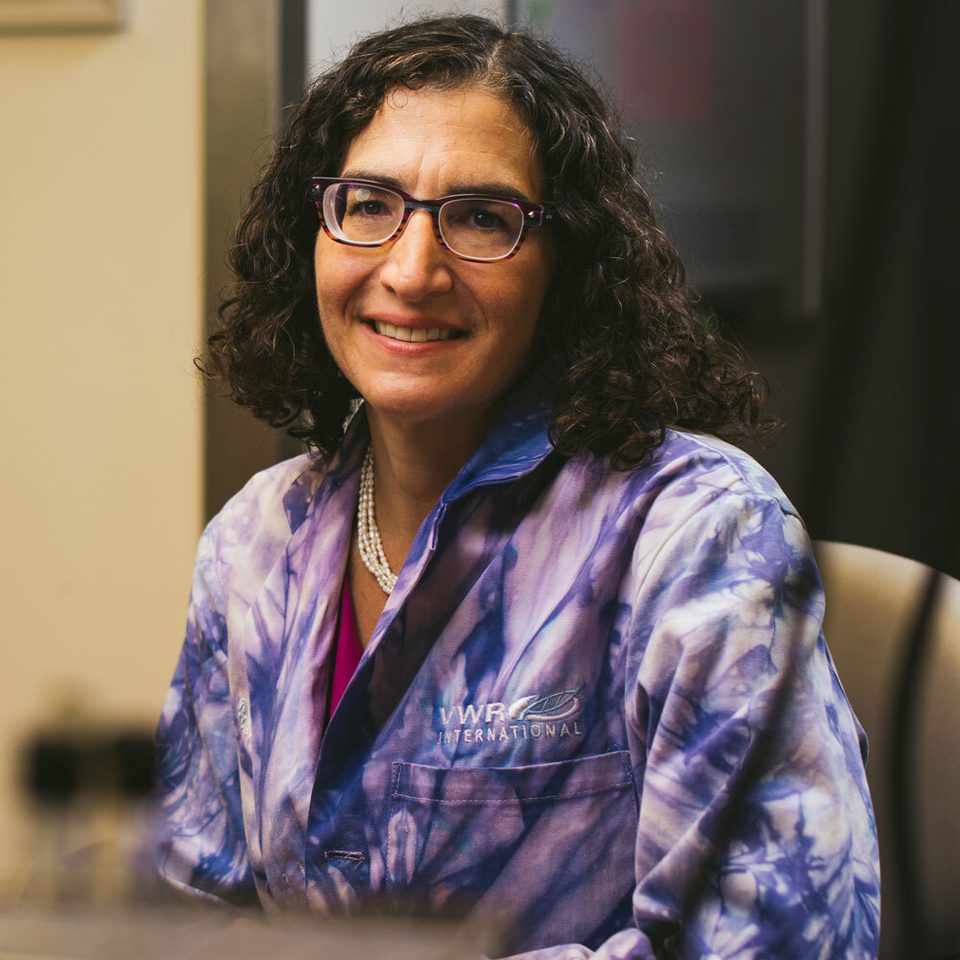Dr. Judith Yanowitz: Studying Meiosis and its link to fertility

Within a cell, the future: Meiosis helps science answer fertility questions
Having a healthy egg isn’t just about a healthy egg,” It’s about a healthy 90-year-old woman. What we as women provide into our developing eggs influences not just a happy, healthy baby being born, but a baby that has a long-term prognosis for health.
Dr. Judith Yanowitz
In a lab just a few floors up from a quiet side street in Pittsburgh, the complex choreography of meiosis is happening constantly: cells dividing and chromosomes connecting, fusing together in an intricate dance that determines life or death, health or illness.
Meiosis — the specialized cell division process that leads to the creation of eggs and sperm — is the focus of geneticist and molecular biologist Dr. Judith Yanowitz, whose fascination with the cellular beginnings of life is shaping the understanding of how a human being’s fate can be partially hardwired even before a fetus begins to grow.
“Having a healthy egg isn’t just about a healthy egg,” she explains. “It’s about a healthy 90-year-old woman. What we as women provide into our developing eggs influences not just a happy, healthy baby being born, but a baby that has a long-term prognosis for health.”
Key to the development of a baby — and the crux of Yanowitz’ research — is the exchange of genetic material between the chromosomes inherited from the mother and the father. Known as crossing over, this process begins with a matching game: the chromosome from the mother breaks and then searches for its match from the same chromosome from the father, and vice versa.
Ideally, the chromosomes all find their appropriate match. But sometimes, they don’t. The result is an egg or sperm with too many or too few chromosomes, or a match at the wrong spot. These missteps in the choreography can lead to genetic conditions such as Down syndrome or, most often, miscarriage.
In fact, according to Yanowitz, up to a quarter of all pregnancies ends in miscarriage; many women who become pregnant and miscarry never knew they were pregnant in the first place, but simply think they had a late period.
Additionally, 10 to 15 percent of U.S. women are struggling with infertility, a high percentage of which can be chalked up to malfunctions in the crossover. So a more robust understanding of that process could lead to better answers both for infertility and for genetic illness.
The problem is that studying meiosis in humans would take decades. Baby girls are born with immature eggs called oocytes, a fraction of which develop into full-fledged eggs years later, after puberty. As a woman ages, the quality and genetic stability of the oocytes decreases, leading to a higher risk of chromosome segregation errors. That’s why women over 35 have more difficulty getting pregnant, and why the chances of genetic syndromes increase.
Fortunately, Yanowitz can study the identical process in a much faster reproductive cycle by looking at microscopic roundworms, which mature from egg to adult in three days. In addition, the worms are transparent, so Yanowitz is able to see the chromosomes as they undergo the crossover and matching process. And the process itself is identical in worms, in larger animals such as mice, and in people.
Yanowitz hopes that one day, her research could result in the development of a drug that could stall the aging of the eggs, prolonging a woman’s fertility, or improving the eggs’ quality — or perhaps a procedure that allows for selection of the healthiest eggs for fertilization.
She is also interested in a key part of the crossover process: when the strands of DNA break in half in preparation for crossing over to meet its match. In all other cells of the body, double-strand DNA breaks are “incredibly toxic,” she says, pointing out that this is usually a prelude to cancer. In reproductive cells during meiosis, the double-strand break is normal. But when the DNA fuses to its match, an imperfect fit can lead to a baby who is born with a much higher predisposition to developing cancer later in life — a risk that the child could pass along to offspring.
“It’s really not just affecting the pregnant mom, it’s affecting then her children and her children’s children. So it could be affecting three or four generations,” says Yanowitz.
A decade ago, if someone had asked Yanowitz the main reason for her work, she would have said it was Down syndrome. And while she is quick to note that understanding Down and other genetic conditions is important, what drives her today are all the other conditions in which meiosis is implicated, and the million-dollar question: What are you going to do about it?
“Life span’s nice; health span’s better. And it appears that some of these genes are really having a profound impact on health span,” she says. She credits Magee-Womens Research Institute with shaping her approach.
“Just thinking about it, and the translational aspect, is what this building has done,” she says. Today, she can see the prospective endpoints of her research — and the inspiration — in a clinical setting. “It’s really transformed my thinking in a more global way.”
Be the First to Know
Get the latest research, news, events, and more delivered to your inbox.